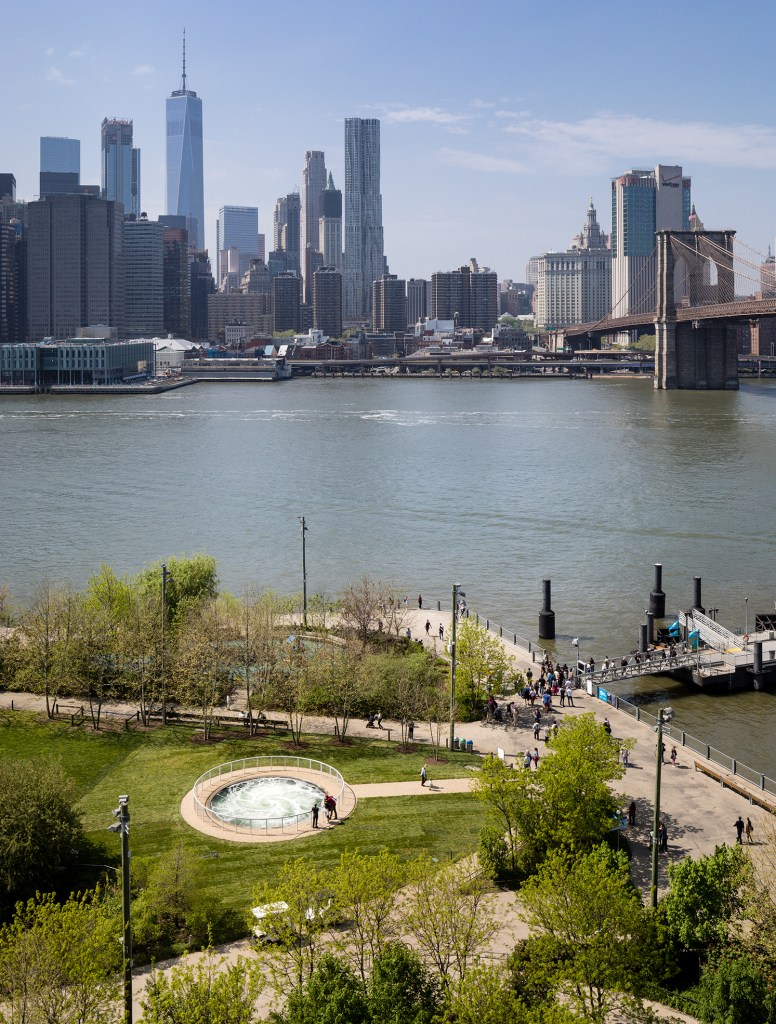When a local art group lures an international superstar like Ai Weiwei to its birthday celebrations, that’s impressive. New York’s Public Art Fund (PAF) has done just that to celebrate 40 years of commissioning artists to make site-specific pieces for New Yorkers to enjoy. Returning to the city this month, Ai Weiwei says: ‘I never expected this Public Art Fund commission. I left New York with nothing. New York is not a romantic city but this is like coming back to an old lover. Today, I arrived, had bagel and lox, tea with milk, and fell in love again!’
How did PAF achieve such global respect? Founded in 1977 by Doris Freedman (1928–81), who was New York City’s first Director of Cultural Affairs, her daughter Susan Freedman took up her baton and is President today. ‘My mother was passionate about the arts. She wanted to bring art out of the museums and concert halls and into the streets, bring it to the public. She wanted to give artists the opportunity to engage with the public.’
Susan Freedman says PAF came out of the 1960s ‘happenings in the street’ and was ‘a whole new way of engaging artists in the city’. Until then public art had been about ‘statuary and memorials, a fountain design, a relief on a building’. When she took over her mother’s role she had worked for the city commissioning art and acquired a vital skill: knowing how the city government functioned, ‘which put me in a good position to negotiate permits, approvals, etc’.
Looking back over her years of bringing artists to New Yorkers in public spaces, Freedman picks out some favourite memories. Her voice lifts as she talks about Louise Bourgeois’s installation of a 30-foot-tall ‘mother’ spider with two smaller ones at the Rockefeller Center in the summer of 2001, ‘I thought that was extraordinary, spiders making their way through the New York streets.’ She is still excited by the early PAF project ‘Messages to the Public’ (1982–90), when 70 artists contributed to an 800-square-foot animated light board in Times Square. When Ugo Rondinone created nine colossal stone figures that stood like ancient sentries guarding Rockefeller Plaza in 2013, ‘he’d never worked in stone before. It kicked off a whole new body of work leading to his magic mountains.’
Anish Kapoor’s Descension in Brooklyn Bridge Park, New York, 2017. Photo: James Ewing, Public Art Fund, NY; © Anish Kapoor

Nicholas Baume is director and chief curator of PAF, which now has a staff of 20 and is still funded by private donations. The 40th birthday celebrations are city-wide. Already New Yorkers can enjoy Anish Kapoor’s Descension, a spiralling funnel of water, which is having its first US showing at Brooklyn Bridge Park, pushing the artist’s exploration of the limits of perception in a new direction. Liz Glynn’s Open House (until September 24), installed at the south-east entrance to Central Park, refers to the opulent ballroom of William Whitney’s now demolished Gilded Age mansion, suggesting that the park is now the people’s ballroom while noting the widening gap between the city’s rich and poor. Katja Novitskova’s Earth Potential comprises digitally-printed images of the earth, celestial objects, and terrestrial organisms arranged on seven large aluminium sculptures in City Hall Park..
But it is Ai Weiwei’s city-wide piece (opening October 12) that New Yorkers will encounter without even looking for it. Called Good Fences Make Good Neighbours, it is inspired by the international migration crisis and the resulting social and political battles all over the world. Across the city, the keen-eyed will spot a grill here, a cage there, a closure where usually there is an opening. Sites include Essex Street Market, the Cooper Union building, bus shelters, and a number of parks.
Baume says the work ‘draws together so many aspects of Ai Weiwei’s life’ – as a child he saw his father, a respected cultural figure in pre-revolutionary China, take work as a toilet cleaner; later, as an adult he intentionally chose New York to live for a decade because it was, he says, ‘the most reviled city by the Chinese’. ‘Today’, says Baume ‘so many of us are immigrants but now in the US we are in a moment of turning away from this.’
Ai Weiwei’s takes up his theme. ‘What is important to remember is that while barriers have been used to divide us, as humans we are all the same. Some are more privileged than others, but with the privilege comes a responsibility to do more.’


